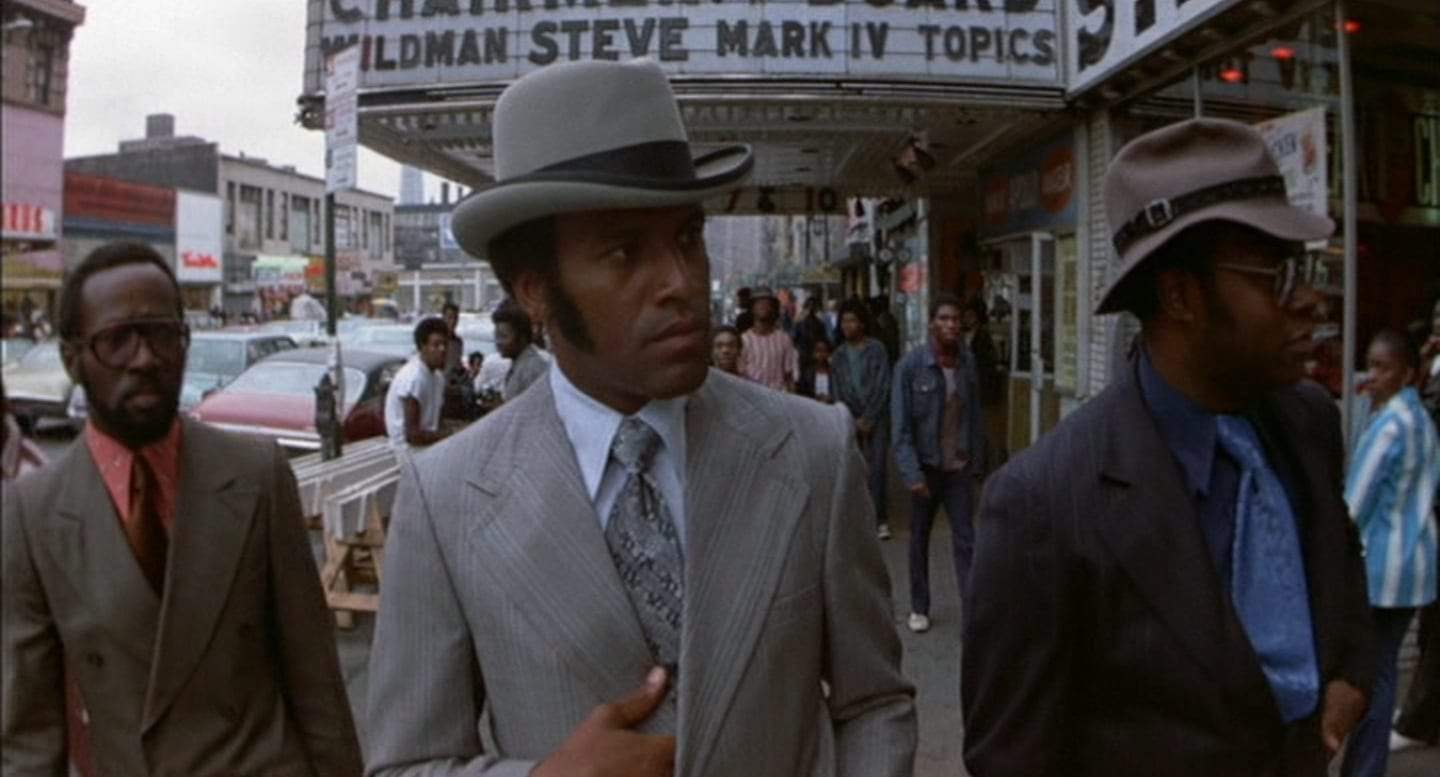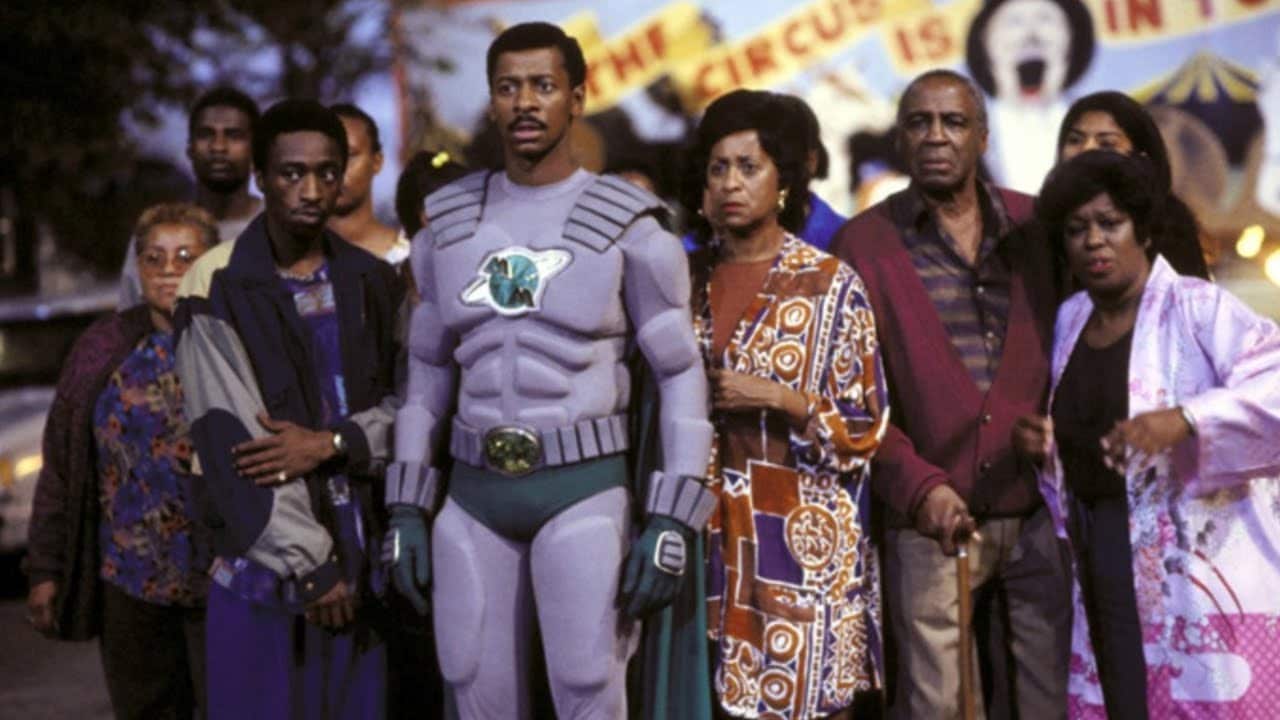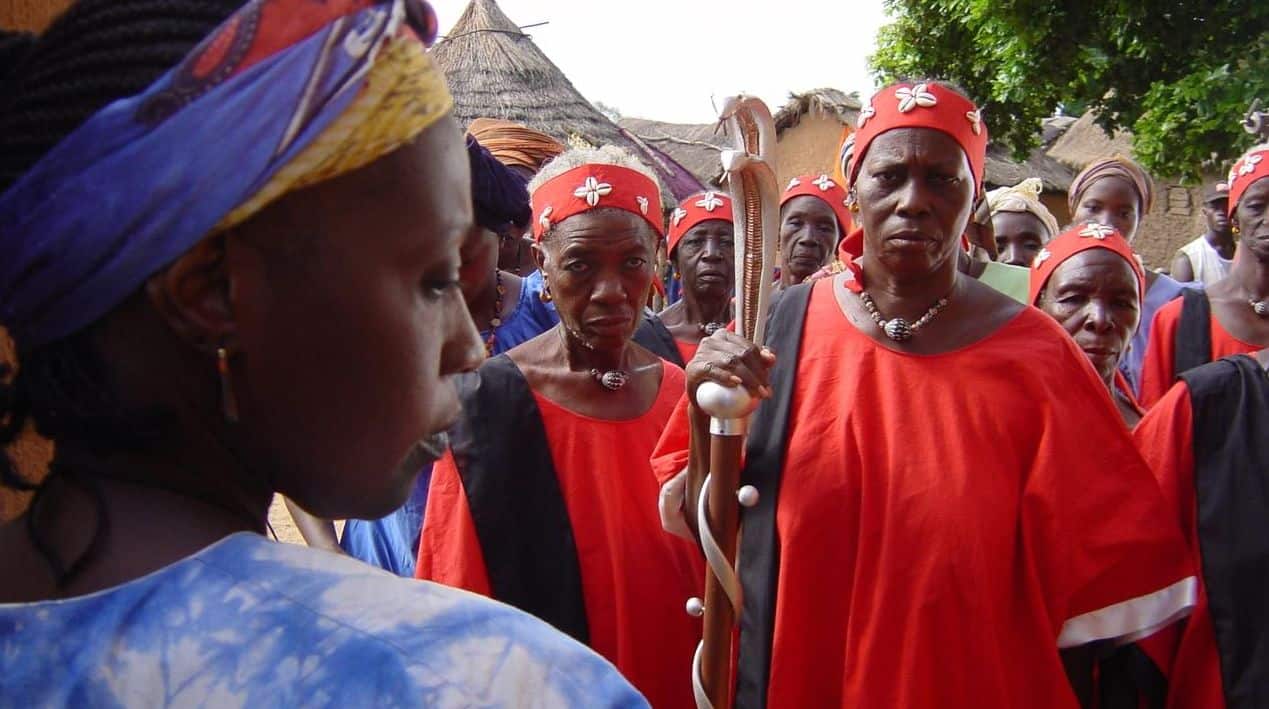We recommend the movies that influenced Ryan Coogler in making his new superhero film plus other essential picks.
As the 18th installment of the Marvel Cinematic Universe, Black Panther is part of a decade-long series of films. But it’s nevertheless a unique and landmark blockbuster from Hollywood, albeit one that owes a lot to past works outside of the MCU and beyond the superhero genre.
There are the movies that directly influenced writer/director Ryan Coogler as he took on the project, and there are the lesser-known but necessary prior gigs of Coogler (such as Fruitvale Station) and its many rising and breakout stars (watch the No Small Parts career showcases on Letitia Wright and Daniel Kaluuya and Fandor spotlights on Danai Gurira and Chadwick Boseman). And then there are the earlier films with black ensemble casts, black superhero characters and dramatic and fantastical stories of Africa worth sharing.
Below is a highlighted selection of movies to watch after you see Black Panther, all of which I consider essential predecessors to the Marvel movie, plus a few extras referenced here and there as honorable mentions.

The Scar of Shame (1927)

In the pre-Hollywood era of American cinema, all-black casts were rare in studio films but not nonexistent. Black Panther, with its remarkably inclusive ensemble of persons of color, first should inspire fans to go back and see early “race films,” from Alice Guy’s 1912 one-reeler A Fool and His Money for Solax and the recently constructed, originally unfinished 1913 Biograph picture Lime Kiln Field Day through the ’30s and ’40s all-black musicals, melodramas, religious pictures, and other movies aimed specifically for African-American audiences, particularly those by Oscar Micheaux and Spencer Williams.
One of the most notable of race films is David Starkman and Frank Perugini’s silent melodrama The Scar of Shame, the only known surviving work from Starkman’s Philadelphia-based (and white-owned and run) Colored Players Film Corporation. I think it best to highlight in relation to Black Panther because it involves a major theme for African American fiction of the time of class differences specifically among the black community. Harry Henderson plays a musician whose family is part of the new black bourgeoisie. He falls for a lower-class girl (Lucia Lynn Moses) whom he rescues from a life of abuse and poverty but can’t bring himself to tell his mother about her because she’s not of proper social position.
While Black Panther doesn’t deal with a class-clashing romance, the movie does involve a main character of not just a certain pedigree but distinctly advanced group who isolate themselves from the rest of their race, continent, and world, in general. T’Challa (Boseman) is a superhero who might save those beneath him but doesn’t share the wealth all around. Some of the conflict between him and the villain Killmonger (Michael B. Jordan) has to do with that issue of Wakanda not helping more of the world, particularly those of their same race, in need, which is akin to the resentment against upwardly mobile African Americans who were thought to abandon those still at the bottom.
![]()
Black Caesar (1973)

One of the movies that Coogler has cited as an influence on Black Panther is The Godfather, which is one of those movies that doesn’t seem to need recommendation through these lists. It’s one of the main mandatory movies for all cinephiles to know. Same with its first sequel, The Godfather Part II. But it’s worth sharing what Black Panther producer Nate Moore said of his director’s inspiration from Francis Ford Coppola’s iconic mafia franchise. Via ScreenRant:
“One of the ideas he also liked was this sort of ‘Godfather’-kind of story. When I say ‘Godfather,’ it’s the idea that it’s very much a story about family and a story about an organization where new leadership is taking place. And much like ‘The Godfather,’ you have to fight for things, right? And they’re all vying for power and in this case, it’s power over Wakanda.”
Well, Black Panther might be “The Godfather of the MCU,” as many have called it (Coogler more generally told Fandango that he watched “a lot of Coppola’s work from the ’70s”), but if I’m going to recommend an old race film I should also recommend at least one blaxploitation pictures, and Black Caesar was sold as “The Godfather of Harlem.” The film is your standard gangster story, specifically redoing the 1931 classic Little Caesar about a gangster’s ascension to organized crime boss, except that it centers on a black cast led by Fred Williamson and features a different sort of soundtrack, care of “Godfather of Soul,” James Brown.
Black Panther/T’Challa as a character predates the blaxploitation boom and his new movie is far more family friendly than the ’70s landmarks of the genre, yet it’s important to be familiar with that era of black film heroes, including Shaft (who brought the action near Wakanda territory in his third movie, Shaft in Africa) and women like Coffy, as well as the more obscure title character of 1977’s Abar (aka In Your Face), which is, as far as I know, the actual first black superhero movie.
![]()
Live and Let Die (1973)

Besides The Godfather, the movies most noted as having a strong connection to Black Panther are those of the James Bond franchise. At one point in the movie, T’Challa leads a mission to a Korean casino, after which a chase scene ensues, and the whole sequence does feel like something out of a 007 film. T’Challa even has his own “Q” in his scientist sister, Shuri (Wright). But what Bond movie is Black Panther most easily paired with? How about Die Another Die with its plot involving the exploitation of African resources? Coogler probably wouldn’t pick that one, as he specifically told Fandango: “Not the new ones. I wanted to watch the ones that were made in the ’60s and ’70s. I watched Goldfinger for the first time, and I just thought it was really interesting in terms of how James Bond was handy.” He also named that early Sean Connery-led Bond picture at the BFI’s European premiere of Black Panther, likening its title villain to the one in his own movie:
“The character of Goldfinger is kind of unhinged and dangerous, but at the same time he had a quality to him that seemed like you would meet him around. He was a very grounded Bond villain. You say, ‘Oh, I’ve met that dude,’ as opposed to some of the other ones that are a bit far-fetched. We wanted our villains to feel like that. We want [Ulysses] Klaue and [Erik] Killmonger to feel like people you could meet.”
But Roger Moore’s first installment as 007, Live and Let Die, is an interesting suggestion considering it’s often classified as a blaxploitation film. Directed by Guy Hamilton, who also had helmed Goldfinger, this one is far less grounded. Very far. The villain, Mr. Big/Dr. Kanaga (Yaphet Kotto), is a drug-dealing Caribbean dictator masquerading as a Harlem gangster. It has a stunt where Bond has to jump atop a number of crocodiles to get across a swamp — a stunt that employed actual crocodiles being jumped on! The movie also features the first black Bond girl love interest, Rosie Carver, played by Black Caesar‘s Gloria Hendry.
Of course, it should be acknowledged there are many other movies with black James Bond types, including those from the blaxploitation era. There’s 1973’s That Man Bolt, in which Fred Williamson plays a courier with kickboxing skills who basically winds up forced into becoming a spy, and The Spook Who Sat by the Door, about the CIA’s “token black agent.” Cleopatra Jones, also from 1973, stars Tamara Dobson as a globetrotting government agent, while the 1975 sequel, Cleopatra Jones and the Casino of Gold is, as the title hints, especially Bond-like in its set pieces. And many years later, Undercover Brother did for the blaxploitation Bond type what Austin Powers did for the real 007.
![]()
Baraka (1992)

Jumping ahead a couple decades, here is this week’s documentary pick. And it’s straight from Coogler’s own list of influences shared at the BFI screening. He explained that his team looked at a lot of BBC nature documentaries, such as the first Planet Earth series from 2006, as well as Ron Fricke’s two features as director, 1992’s Baraka and 2011’s Samsara, both of them non-narrative globally epics shot in 70mm. He said of how the group of films/series inspired the look and feel of Black Panther’s setting of the fictional Wakanda:
“It was more nonfiction filmmaking, more than the science fiction stuff. For us the ancient nature of everything was actually more interesting than the futuristic element. We thought that would be more unique, if we could make it like an ancient African place that had built on itself for a long time – if that makes sense…[these films] found a way to make real things look fantastical but still feel real, like places you can go to. We wanted Wakanda to feel like a place you can go to, a place you could catch a plane to right now.”
Both Baraka and Samsara offer spectacular visuals of such fantastically real locations across six continents with focus on nature and spiritual rituals, much of the footage presented in slow motion or time-lapse. But if you can only see just one I’d choose the earlier film. Even if it does feature fewer shots of Africa overall, albeit an equal amount focused on the region where Wakanda is imagined to be situated. Baraka showcases the Maasai people of Kenya, whose culture and clothing were among those that inspired Black Panther costume designer Ruth E. Carter, particularly with the bright red uniforms of the Dora Milaje.
![]()
The Meteor Man (1993)

After the little-known Abar, the next black superhero movie arrived more than a decade later courtesy of Robert Townsend, who also starred as the title character. The Meteor Man is pretty cheap looking and goofy, and you’ll have to just close your eyes and ears when Bill Cosby appears, but there’s a dated charm to the whole thing, especially for its inclusion of so many notable celebrities of color among its mainly black cast. More than most of the black superhero movies that would follow, including the Blade trilogy and Hancock, this one could also be considered a superhero black film in terms of its cultural representation.
Of course that also means that, like Black Panther, the movie also deals with problems more specific to black culture and African-American life compared to white superheroes tending to be about broader, more general heroic tasks. While Marvel’s movie takes on such issues as Western imperialism, post-colonialism, and dispossession as they relate to an advanced, isolationist, bourgeois African nation, The Meteor Man is focused on urban crime and gang violence as the things a black superhero must and would be concerned with exclusively.
![]()
Moolaadé (2004)

Even though he’s from the other side of the continent from Wakanda’s location, I can’t not start recommending African films without recognition of Ousmane Sembene. The author and filmmaker is considered the father of African cinema and is noteworthy for his stories of post-colonial life and the clash of modernity and progress with traditional customs and rituals. His 1977 feature Ceddo, for instance focuses on a Senegalese tribe’s disagreements over changes coming to their region — specifically religious influences — and a conflict ensues between the commoners and the royal family, a situation that obviously sounds relevant to Black Panther.
While Sembene’s entire filmography is recommended, in any order, I’ve chosen to highlight his final film, Moolaadé, because it’s probably his most accessible, despite the seemingly difficult subject matter of female circumcision being in focus. Like a number of Sembene’s movies, this one champions women’s stories that challenge the traditions, mostly patriarchal in nature, that shouldn’t be held on to even as too much cultural adjustment and assimilation is frowned upon.
Like Black Panther, Sembene’s movies are progressive in their feminist heroines — Moolaadé‘s protagonist, Colle (Fatoumata Coulibaly) is a sort of real-life superhero for her mission to protect young girls from the painful ritual — and they’re similarly concentrated on drama amongst African characters rather than bothering so much with problems with whites/Westerners. Interestingly, more like Colle’s opposition in the village, the Wakandans of Black Panther are slower to accept other ways in which they should be evolving to embrace more humane ideas that allow them to better fit in with the rest of the world.
![]()
Les Saignantes (2005) and Pumzi (2009)

For Black Panther‘s Afrofuturist aesthetic, there is plenty of African and black sci-fi cinema that is not well-known to Western audiences, from John Coney’s 1974 Sun Ra movie Space is the Place to more recent examples like Les Saignantes from Cameroonian filmmaker Jean-Pierre Bekolo, and the short Pumzi by Kenyan filmmaker Wanuri Kahiu (whose 2012 Ted Talk on Afrofuturism in pop culture is also worth watching). The latter is especially worth highlighting not just because it’s available to watch online for free but also because Coogler has a great appreciation for women filmmakers, even stating once that he believes they’re better than male directors. (Les Saignantes, which isn’t easily found otherwise is also online but not so legally.)
But both films are fantastic in the own very different ways, even as they’re both set in the future — Les Saignantes in 2025, Pumzi 35 years after World War III, aka “The Water War” — and both involve female protagonists. Pumzi focuses on a woman working in a lab that might remind you of Shuri in Black Panther, while Les Saignantes is about two prostitutes who have to dispose of the body of a corrupt politician who dies during sex, and as they further into more action-oriented scenes they might remind you of the badass women of the Dora Milaje. Together the films offer a sampling of the variety of what Afrofuturism can entail. And we can hope that Kahiu eventually gets to achieve her intention to turn Pumzi into a feature.
The article Watch ‘Black Panther,’ Then Watch These Movies appeared first on Film School Rejects.



0 comments:
Post a Comment